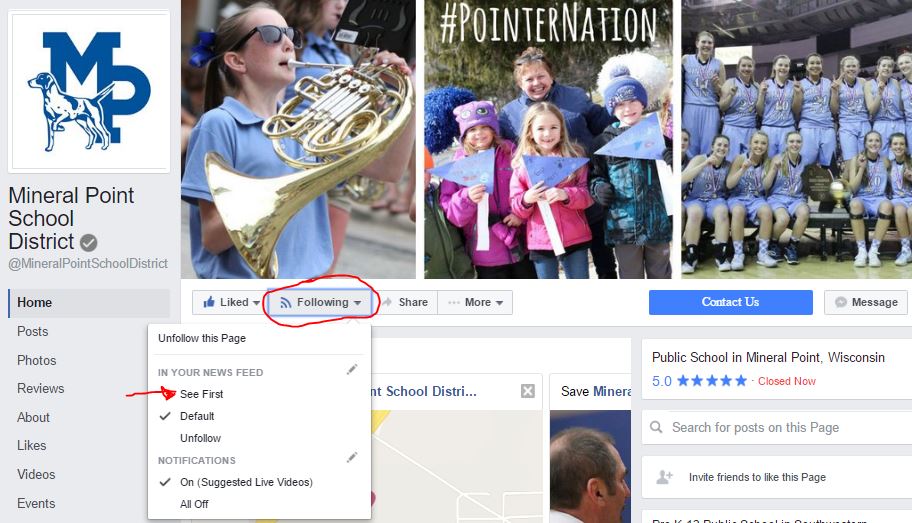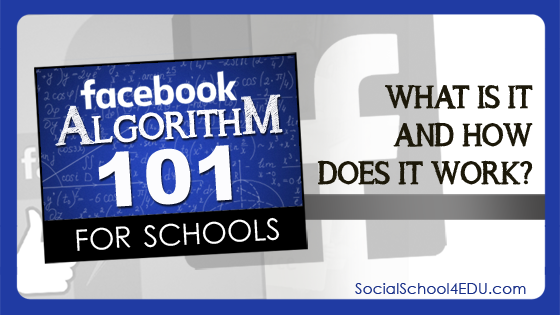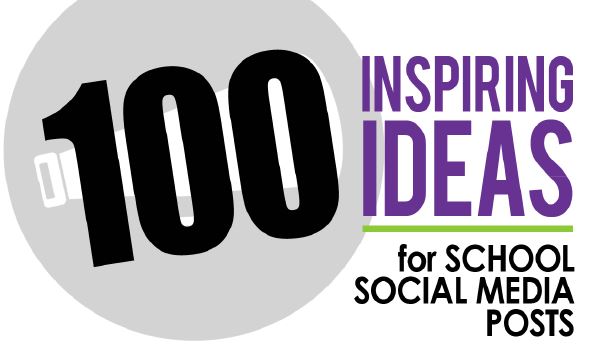Brenda manages the social media channels for Proctor Public Schools in Minnesota. What an awesome job! She recently posted this cool video of junior, Brett, playing the button box on Facebook.
Brett Borg on the Button Box
Brett, a junior at Proctor High School, started playing at the age of 4. Tune in until the end, where he shares more details on the instrument he is playing.
Let’s give him a shout out below for his amazing talent! #RailStrong
Posted by Proctor Public Schools on Thursday, December 22, 2016
It reached over 7,000 people on a page with only 1,100 likes. It had over 30 shares and 21 comments. More than 150 people took the time to push the like or love button on the post—a huge story showcasing the student.
Winning!
But earlier in the week, Brenda shared a great story about Mrs. Hughes being awarded the Irving Foundation Innovation Award. This post only reached 441 people on Facebook. Why such a difference when the school has over 1,100 fans? Shouldn’t it at least reach all of those people?
The answer is no. Every post you share won’t reach all of your fans.
Why? Two words—Facebook algorithm.
What Is the Facebook Algorithm?
Simply put, the Facebook algorithm is a complicated set of rules that controls what people see on their newsfeeds. Its goal is to deliver the pictures, videos, and updates that you want to see.

Photo Credit: www.postplanner.com
And by “you,” I mean you by name! Mark Zuckerberg terms it the “perfect personalized newspaper.” There are over 1.5 billion users, and the newsfeed stream is different for each of those people!
Each time you open Facebook, it scans and collects everything posted in the past week by your friends, everyone you follow, each group you belong to, and every Facebook page you’ve liked. This could mean over 10,000 posts. The algorithm then springs into action, ranking them all in an order of what it believes you will find most worthwhile.
The exact formula of the algorithm is constantly being updated by Facebook engineers. Some have said that over 100,000 factors go into the ranking calculation, and it is growing each week.
There are both automated and human elements that go into the ever-changing algorithm used by Facebook. Time spent on specific posts, reactions (likes, loves, etc) to it, comments made and shares are ways that Facebook can tell that a specific post is interesting.
Facebook also taps into over 700 viewers around the United States. This group provides feedback on how well they feel the platform is doing on delivering interesting posts to their newsfeed.
Increased competition has also had a dramatic effect on the ability for “organic reach.” Organic reach is defined as reach gained free of charge. This has consistently gone down for business pages, and this also affects your school pages. Facebook has a well-known “pay to play” system where you can boost posts or create advertising campaigns on the platform. I don’t offer a lot of expertise in this area, but here is one article on boosting posts.
Facebook Controversy
There is controversy over the amount of control Facebook has over what we see. Facebook has the ability to control what users buy, how they vote, and even how they feel. And the issue with “fake news” is really starting to make waves. Articles that look official are spreading false stories that have the ability to negatively affect many people quickly, especially with the ability for stories to go viral in a matter of minutes or hours on Facebook.
Facebook realizes these issues and is striving to make improvements. That is why the algorithm is always changing. They are focusing on the end-user experience.
Some Control
Facebook has introduced some options for more control by users. The “See First” option will let users choose which friends and pages they want to see at the top of their feed. They can also choose to receive notifications from pages when there is a new update.

Facebook users should understand that interacting more with certain people or pages will indicate to Facebook that they like that type of content. It is similar to the concept of seeing ads for mattresses on Facebook after I shop for one online, or seeing posts for fitness programs now that I’m trying to get in shape in 2017. Facebook knows what we are interested in. If you want to see more from specific friends and school pages, we should make sure to interact with it!
Another option is of course for users to specifically visit the pages that they want to see. Your followers can type in your school’s Facebook page name and scroll through to see all of your posts made. The truth is, most Facebook users do not do this. They jump on and just scan through their newsfeed to get the latest updates.
Now that you understand what the Facebook algorithm is, your obvious question is, “How can I get my school posts seen by more people?” This article probably gave you some ideas, but I want to make it even easier. Stay tuned for my blog next week that will share 11 ways to improve your Facebook newsfeed performance for your school.
Until then, have you signed up to receive my free weekly Social School Bulletin Board newsletter? You’ll never miss an update, and this is the place where you’ll get great ideas from other schools that use social media to tell their stories. Sign up now and grab 100 ideas for post ideas for your school.



